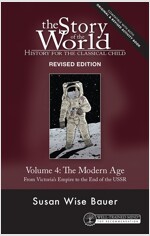Ch.36 Struggles and Assassinations
The Death of John F. Kennedy
- At 12:30 p.m., the president‘s car passed a tall building called the Texas School Book Depository. Shots rang out. President Kennedy was hit twice, once in the neck and once in the head. Governor Connally was shot in the back.
- The driver sped away, towards a nearby hospital. But it was too late. When the car arrived at Parkland Hospital, Governor Connally was still alive, but the president of the United Stales was dead.
- But in the 1950s, there were plenty of worries under the surface. The Cold War had grown more frightening. Immigrants who came to America from other countries often lived in poverty, surrounded by dirt and disease. Especially in the South, African-Americans were denied the right to live peace-fully, to vote, and to do all of the things that white Americans took for granted.
- These problems had been there all along but after Kennedy‘s assassination, they seemed to rise to the surface. They became easier to see. Life in America seemed a little less glittering and a little less wonderful. Americans were forced to face up to the troubles in their own country.
Civil Rights
- The segregation laws of the American South were nicknamed ˝Tim Crow laws.˝ They took this name from an old, nineteenth-century song called “Jump Jim Crow”.
- It took years for the schools of America to become fully integrated. The courage of boys and girls like Elizabeth Eckford, and of men and women like Rosa Parks and Martin Lucher King, Jr., helped to bring about full civil rights for American blacks. The civil rights movement was also helped by the power of the United States government, which often told the states that they had no choice but to follow the orders of the Supreme Court-or else.
- In 1964, the United States Congress passed the Civil Rights Act. This law said that restaurants and other establishments would no longer be allowed to discriminate on the basis of skin color. They would have to serve both whites and blacks. There would be no more separation. In 1965, Congress passed the Voting Rights Act, which guaranteed black people the right to vote.
- Three years afterwards, on April 4th, 1968, the great civil rights leader Martin Luther King, Jr., was staying in a hotel in Memphis, Tennessee. He was preparing to lead a march char aimed to help local black workers get better pay. As he stood on the balcony ofhis hotel room, an assassin shot him. He was rushed to the hospital, but he died an hour later.
